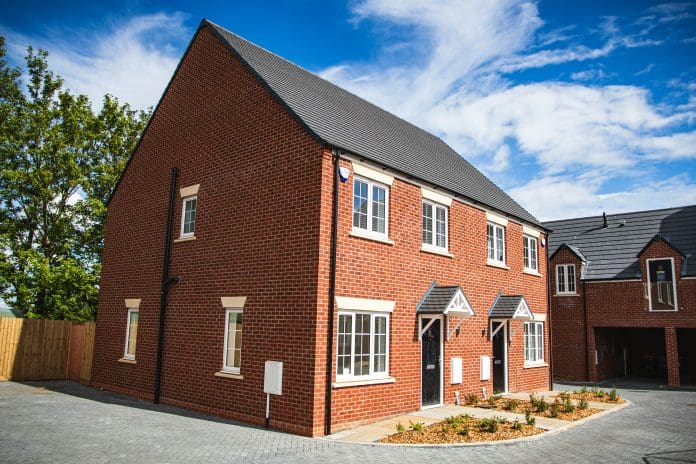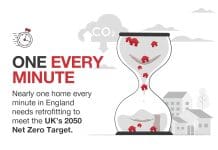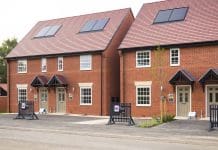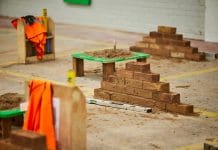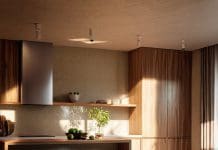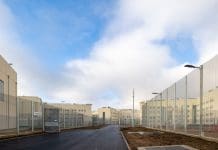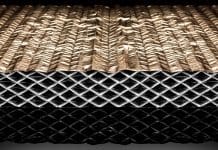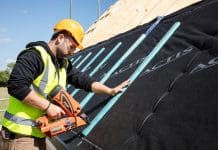Only 3% of England’s houses are highly energy-efficient, so why aren’t developers embracing sustainable construction standards?
The UK housing market is experiencing a shift, as the demand for sustainable features rises. While eco-friendly homes are becoming increasingly attractive, developers remain hesitant to embrace sustainable construction practices, leaving much of the UK’s housing stock energy inefficient.
According to a report on energy efficiency and passive housing in the UK, only 3% of England’s houses have an EPC rating of A or B – meaning they are very energy efficient. This represents a rise of only 0.3% compared with the previous year, and just 2% in the last five years.
Even though moderately efficient C-rated homes have increased by almost 16% in five years, this progress is still far from optimal.
The real-world impact of energy inefficiency also cannot be ignored. A third of people in the UK find it difficult to pay their energy bills, highlighting the urgent need for sustainable, cost-effective housing solutions.
With net zero targets looming and an ongoing energy crisis, the UK housing supply needs transformation. One of the solutions that has emerged in the UK in the last 10 to 15 years is Passivhaus, a standard for energy efficiency and air quality in buildings. It aims to achieve consistent temperatures, fresh air and minimal energy usage in buildings.
However, the Passivhaus Trust estimates that only 1% of new homes are built to Passivhaus standards.
What barriers prevent the uptake of Passivhaus as a sustainable construction standard?
The lack of interest in Passivhaus is due to several factors, including:
- Higher upfront construction costs.
- Lack of expertise in Passivhaus design and construction.
- Perceived complexity of meeting Passivhaus standards.
- Absence of policy incentives.
The upfront investment for a passive house is higher than for a traditional build, although only by around 8%. The Passivhaus Trust also indicates that by “considering further development of skills, expertise and supply chain maturity… extra costs could come down to around 4%.”
The construction of a standard three-bedroom semi-detached house costs approximately £133,000, according to the Housing Forum. Meeting Passivhaus standards would add between £5,320 and £10,640 to this project.
According to a report on energy efficiency and passive housing in the UK, only 3% of England’s houses have an EPC rating of A or B – meaning they are very energy efficient. This represents a rise of only 0.3% compared with the previous year, and just 2% in the last five years.
The Housing Forum also estimates that a typical two-bedroom high-rise flat would be £225,000, meaning the additional cost of implementing Passivhaus standards would range from around £9,000 to £18,000.
However, while there is an additional cost, long-term energy and maintenance savings narrow – and often outweigh – the initial cost gap.
Alan Siggins, managing director of Passivhaus Trust member Airflow, said: “It’s true that Passivhaus buildings typically have higher upfront construction costs than traditional new builds. However, this difference can vary and the cost of projects has reduced over the years.
“Passivhaus Trust, which certifies passive house buildings in the UK, suggests that best practice costs were around 8% higher than similar non-Passivhaus projects in 2018. As Passivhaus design becomes more mainstream, we expect the cost to continue decreasing, as the industry gains more experience and the necessary materials and technologies become more widely available.
“Passivhaus is generally considered worth the investment, especially in the long term. Houses designed to Passivhaus standard can offer energy savings of up to 90% and the
indoor air quality is improved, so you’ll see a significant reduction in running costs and improved comfort and health benefits.
“It is also possible to retrofit existing buildings to meet the Passivhaus standard, but it is challenging. Since passive house principles are harder to achieve in existing properties, the Passivhaus Trust developed the EnerPHit standard. The criteria for EnerPHit are more relaxed than those for Passivhaus, but meeting this standard still means that the building will likely outperform new builds for comfort and energy use.”
While full Passivhaus certification isn’t always achievable, its principles, such as improved insulation, airtightness and ventilation, can still be widely applied. These approaches, while they may not meet exact Passivhaus performance thresholds, can still deliver substantial energy savings and enhanced occupant comfort and health.


